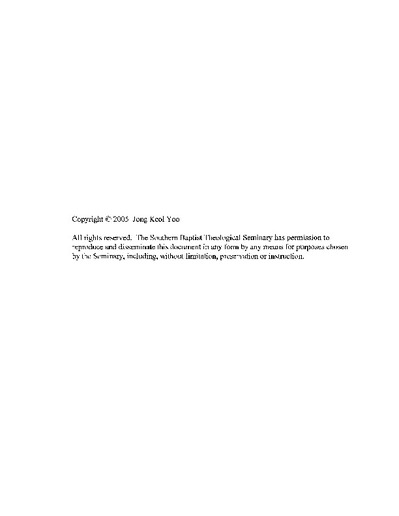Training Chinese house church leaders: Factors influencing leadership development strategies
Abstract
There is an enormous, urgent, crucial need for leadership training to support the rapid growth of the Chinese house church. This dissertation examines ten factors that should be considered when outsiders, such as Western missionaries, develop effective strategies: (1) economic and geographic factors, (2) relationship with the TSPM church, (3) cultural and historical factors, (4) Chinese intellectuals, (5) political factors, (6) influence of four leaders, (7) Korean people's role, (8) groups in the house church, (9) women in church leadership, and (10 )effect of the "One-Child Policy."
Chapter 1 mainly introduces the dissertation's thesis, the proposal's background, and the research methodology. Each of the ten factors is briefly explained as the thesis, and the purpose is clarified.
Chapter 2 presents an early history of the Chinese church, which is divided into three sections: (1) the early history of Christian missions to China, 635-1784; (2) imperialism and Protestant missions to China, 1807-1900; and (3) nationalism and the independent church movement, 1901-1949.
Chapter 3 deals with a history of the Chinese house church movement under the Communist regime from 1949 to the present. First, the formation and survival of the Chinese house church movement under Mao Zedong's rule are explained. Next, the growth and current situation of the Chinese house church movement are described.
Chapter 4 identifies the urgent need for, and the current situation of, Chinese house church leadership training, compared with those of the TSPM church.
Chapter 5, as the dissertation's conclusion, explores the ten factors that should be considered in developing Chinese house church leadership-training strategies. Besides authoritative sources, the survey results are used extensively to support my assumptions. Some effective models are suggested.

